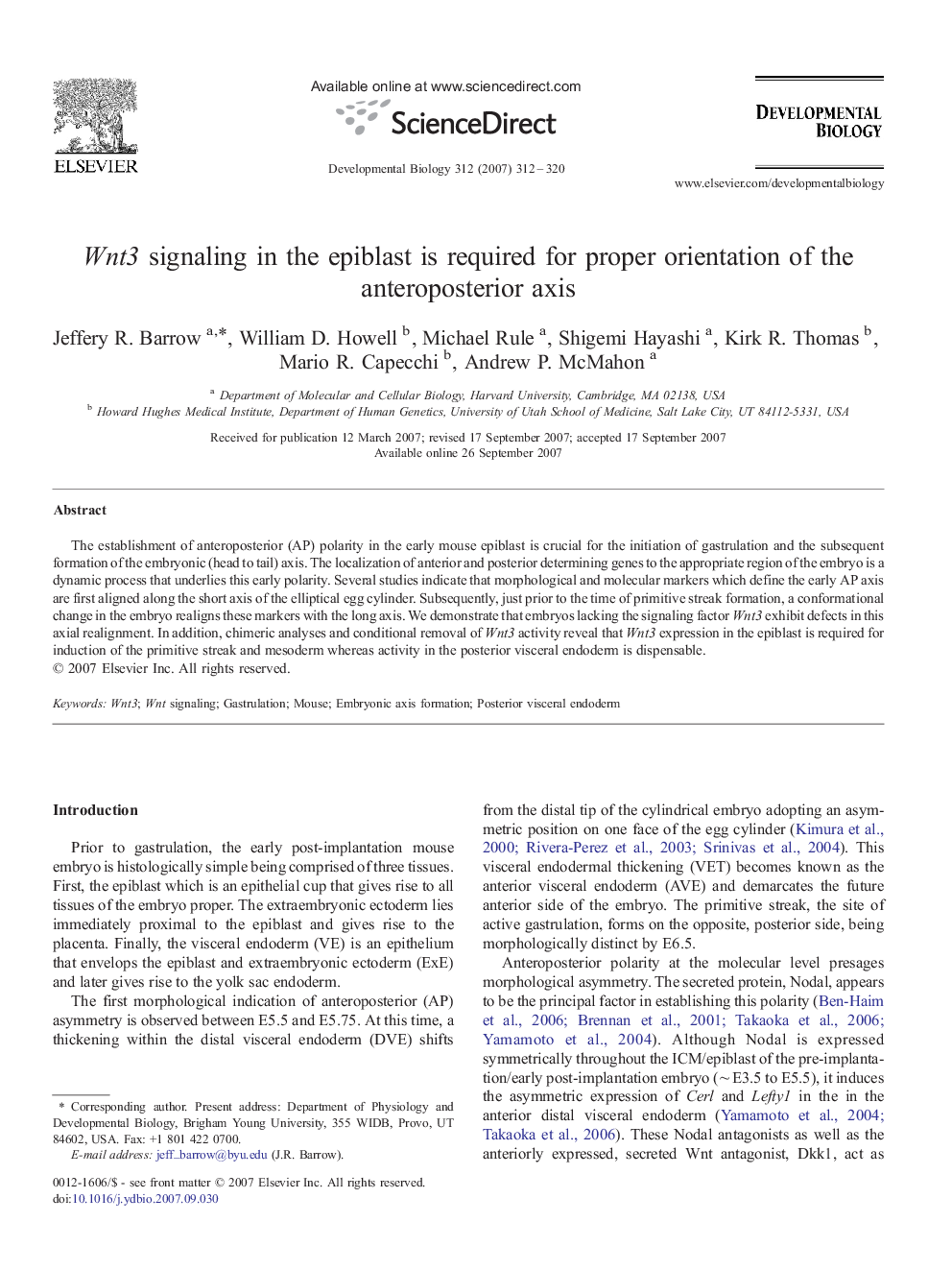| Article ID | Journal | Published Year | Pages | File Type |
|---|---|---|---|---|
| 2174770 | Developmental Biology | 2007 | 9 Pages |
The establishment of anteroposterior (AP) polarity in the early mouse epiblast is crucial for the initiation of gastrulation and the subsequent formation of the embryonic (head to tail) axis. The localization of anterior and posterior determining genes to the appropriate region of the embryo is a dynamic process that underlies this early polarity. Several studies indicate that morphological and molecular markers which define the early AP axis are first aligned along the short axis of the elliptical egg cylinder. Subsequently, just prior to the time of primitive streak formation, a conformational change in the embryo realigns these markers with the long axis. We demonstrate that embryos lacking the signaling factor Wnt3 exhibit defects in this axial realignment. In addition, chimeric analyses and conditional removal of Wnt3 activity reveal that Wnt3 expression in the epiblast is required for induction of the primitive streak and mesoderm whereas activity in the posterior visceral endoderm is dispensable.
